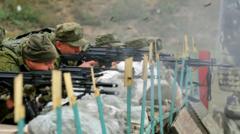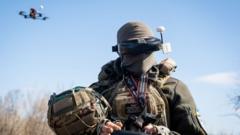A detailed report highlights the record number of Russian military casualties during the ongoing war in Ukraine, showcasing how strategies have intensified combat losses while recruitment tactics are shifting to compensate for the high toll.
Analyzing the Escalating Death Toll: Russia's Losses in Ukraine Reach Alarming Heights

Analyzing the Escalating Death Toll: Russia's Losses in Ukraine Reach Alarming Heights
A comprehensive review of Russian military casualties in Ukraine reveals a staggering increase in fatalities, especially throughout 2024, as heavy fighting continues.
In 2023, the Russian military faced unprecedented losses during its ongoing invasion of Ukraine, with reports indicating at least 45,287 fatalities over the course of the year. This staggering figure reflects a casualty rate nearly three times higher than the initial year of conflict. The most intense fighting occurred during extended battles in Bakhmut, marking this period as the deadliest for Russian forces thus far.
As per an analysis conducted by the BBC Russian Service alongside Mediazona and supporting volunteers, estimates suggest that approximately 106,745 Russian soldiers lost their lives during the full-scale invasion. However, experts caution that the true death toll may be significantly higher—potentially between 164,223 and 237,211 when broader circumstantial data is considered.
The catastrophic peak of casualties was observed on February 20, 2024, following a devastating strike on a training ground in Volnovakha, where 201 Russian soldiers perished. Eyewitness accounts indicate that soldiers were gathered under the pretense of a medal ceremony when disaster struck, resulting in deaths including officers and newly conscripted servicemen.
The statistics reveal a stark pattern: Russian losses accelerated continuously in 2024 as combat tactics shifted towards direct engagements that yielded increasingly high death counts with minimal gains in territory. For instance, as of October 2024, high-intensity assaults coupled with strategic advances into Ukraine's eastern regions claimed a staggering number of lives—estimated at 11,678 during a slow advance between September and November alone.
While capturing an additional 4,168 square kilometers of territory, the lethal price tag reveals a grim statistic of approximately 27 soldiers per square kilometer during 2024. This figure underscores the escalating human cost of the ongoing conflict.
As casualties mounted, Russian recruitment efforts intensified, leading to the reinvention of military strategies to replenish the ranks swiftly. Increased financial incentives reportedly motivated many to enlist, transforming those who signed contracts to avoid legal troubles into the fastest-growing demographic of military personnel, accounting for one-quarter of identified casualties in the war.
Amidst the escalating conflict, regions such as Bashkortostan have reported alarming death rates, with many soldiers lacking prior combat experience before being deployed. As heavy losses continue, the likelihood of actual fatalities remains underreported, particularly for those still unaccounted for on the battlefield.
In conclusion, as the war drags on and strategies evolve, the toll on Russian Armed Forces presents an alarming pattern of higher casualties, challenging traditional military doctrines and raising questions about the sustainability of current recruitment methods amidst a devastating humanitarian crisis.




















